Living in Japan has been a privilege in many ways – cheap and healthy convenience store meals, decent coffee for a dollar, interesting scenery, and for folks like us – access to film cameras.
I have had luck finding interesting analog cameras everywhere from the well-publicized Shinjuku and Ginza districts of Tokyo to the remote Ryukyu islands. As described in my ‘Going Analog in Okinawa‘ series, I jumped into familiar SLR territory initially but since then I have branched out into the point and shoots for a couple reasons.
The qualities of digital sensors are the primary distinguishing factor and point of competition between the big camera manufacturers. High-ISO performance, megapixel count, stabilization, etc. are what differentiate amateur, hobbyist, and pro product lines.
However – all 35mm film cameras have the same “sensor”. Whether shooting a Leica or a point and shoot found in a bin – film is a common denominator (but clearly not the be-all-end-all; I don’t mean to compare Leica glass to that in a point and shoot – obviously the glass matters).
Prime example – I expected absolutely nothing from this 550 yen ($4) 1995-vintage “Zoom Cardia Super 170” when I dropped in a 24-shot roll of Kentmere 100.
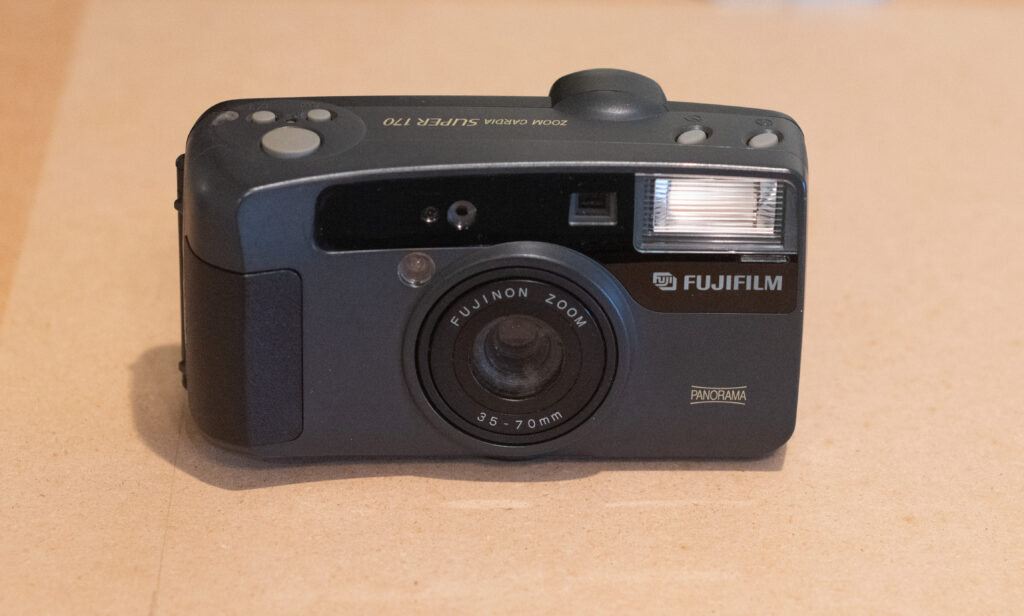
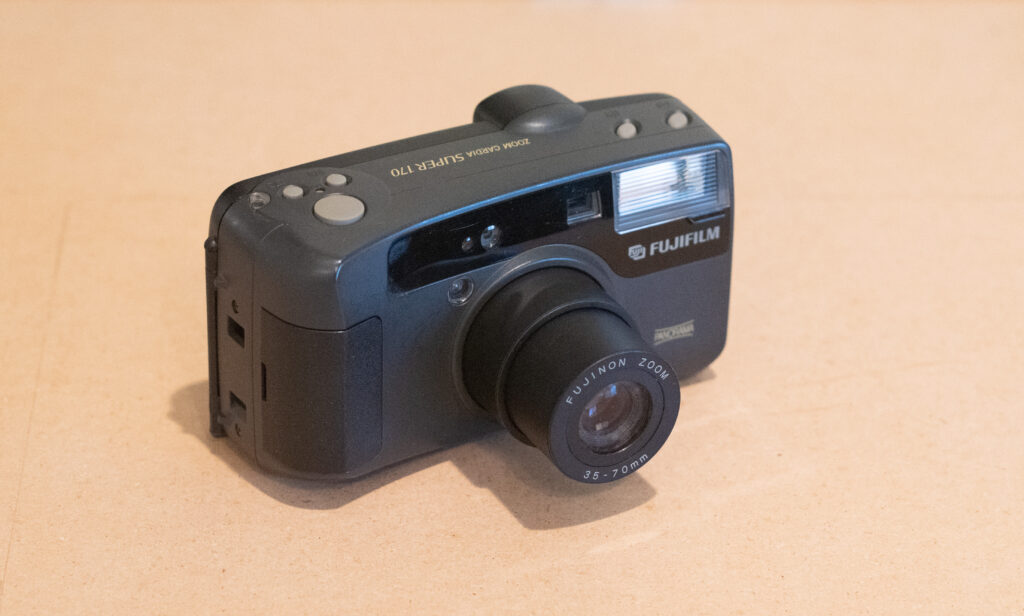
I brought it along to complement my Fujica G690 with its fixed 100mm and expensive medium format. The zoom let me get some different framings, both wider and tighter. I was also willing to “chance it” on some compositions that paid off well. Here are a few of my favorites from that roll:
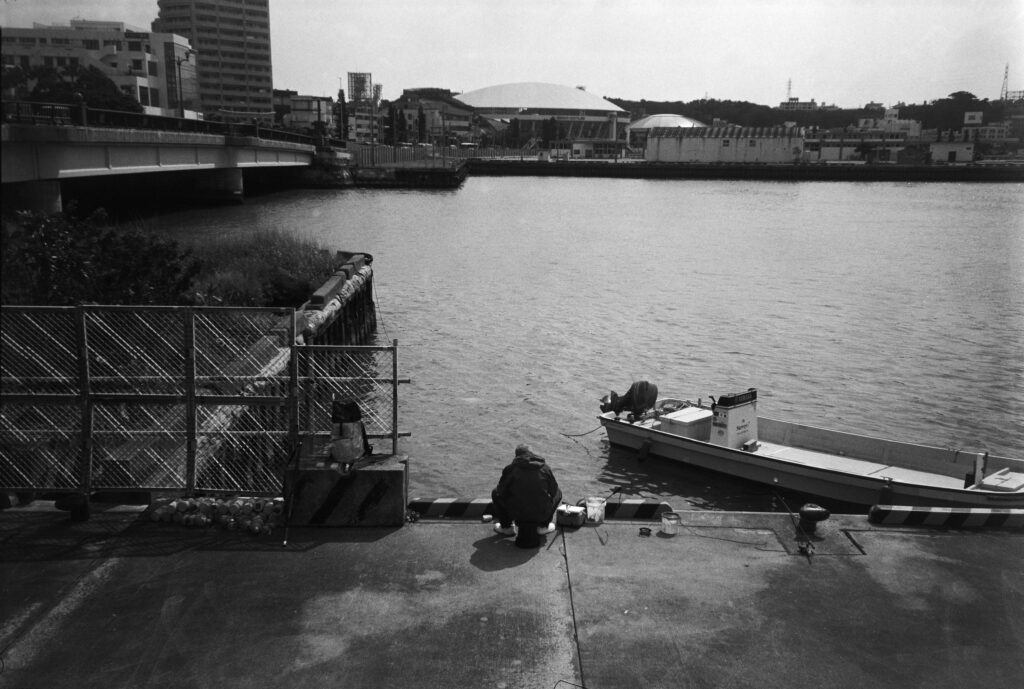
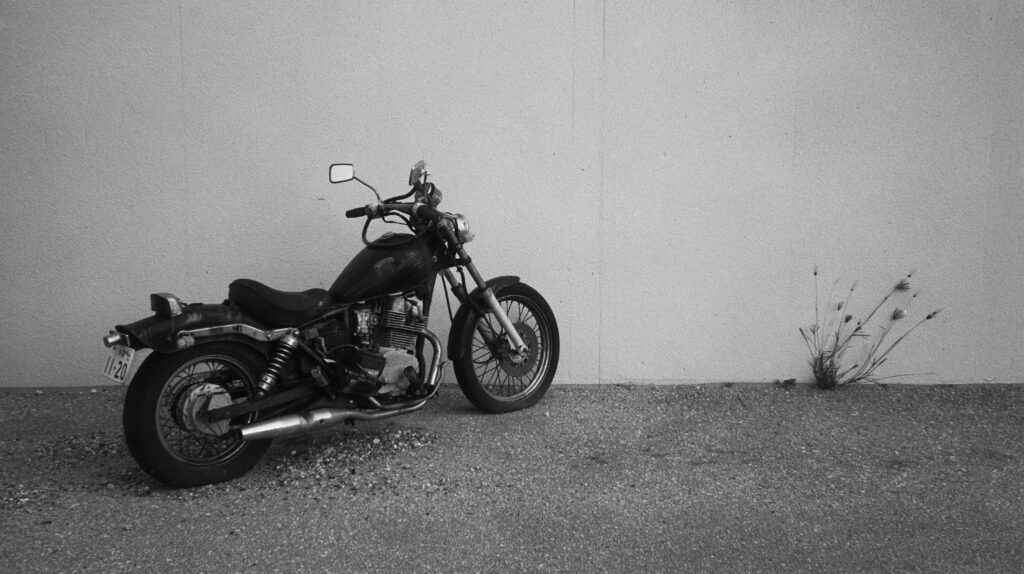
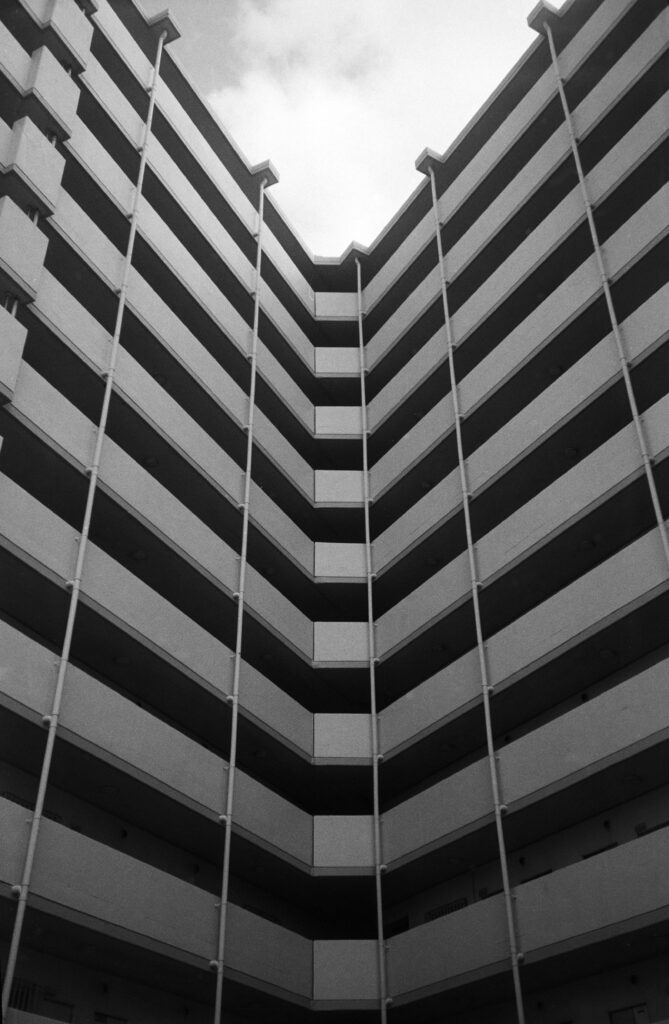
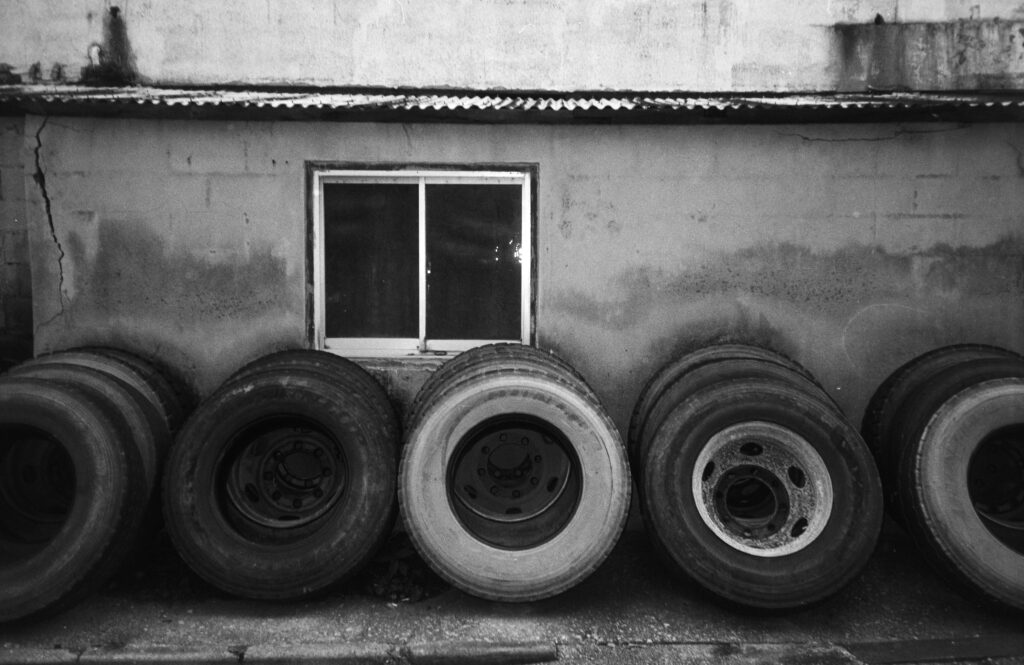
I also enjoy the P&S form factor for coming with me on jogs – I would hate to sweat all over the beautiful works of art that are the metal Spotmatics or Nikons, but at the same time we all hate the sinking feeling of “I really wish I had a camera right now” – a pocketable P&S can come along with me on trips where an SLR might be too substantial or subject to harm.
For the Fuji DL-300, the example was this hat-wearing bull going on a walk:
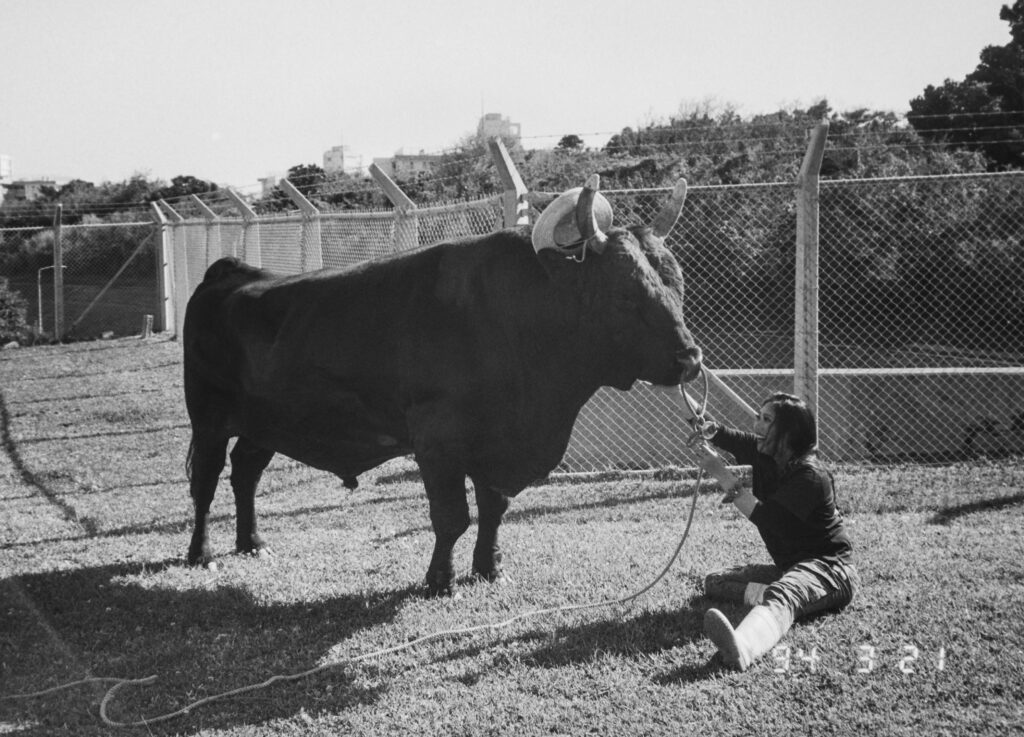
I am also not of the generation that grew up with flash photography – so rediscovering the interesting effects it has in lighting certain scenes has been a treat:
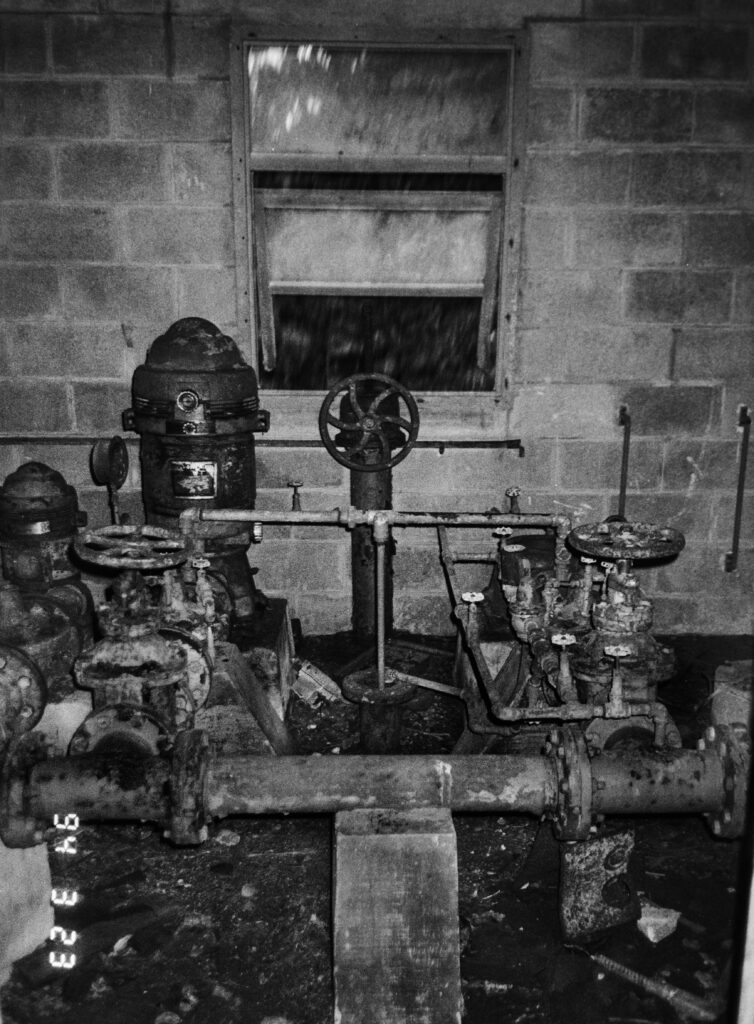
Another nice case – I prefer shooting B&W, but there are certain scenes that demand color. I don’t come across these often, but when I do, it’s nice to be able to have two film stocks on hand. I haven’t been all that troubled with having an SLR on a strap around the neck and a P&S in a pocket. I don’t have any of these to show for now because I don’t develop C41 at home and I haven’t made it to a lab yet (perhaps a future article).
Why don’t I just use a smartphone for my second camera, one may ask? Good question. Perfectly fine. But then we’re not talking film anymore, are we?
Having collected and tried a literal pile of sub-$5 point and shoots – one quirk of their operation is the time they can take to release the shutter. There is a lot happening in the simple circuits – the image is being metered, a small motor is hitting focus, and aperture/shutter times are being set. In many of the cheap point and shoots I’ve tried, there’s very little indication of how far along this process is other than a blinking “the autofocus is doing something” light. Sometimes a full press of the shutter yields an immediate photo without much hesitation. Other times, I find myself standing, holding the shutter button down (and hopefully holding the composition) for 2-5 seconds while the camera decides what to do, even in bright light. Most of the P&S I have tried are afflicted with this.
This has caused me to miss a couple shots – I’ve occasionally had the shutter fire in the middle of me lowering the camera to see what had happened. All-in-all this has generally not been that frustrating because I accept the niche these cameras fill and the compromises they make. For landscapes and low-stress walk-abouts these quirks are fine. That and the price is right; the film costs more than two or three of these, but they work quite well.
My other mistake in using these was loading some of my bulk-rolls. I filled the canisters to the max – getting 45 shots into some of them. Drawing the film out can be very tight at the start. This is fine in my Nikon F2 or other SLRs where I can be gentle and steady on the advance lever, but giving fragile old motors more work is a poor idea. Moving forward I’ll probably use 24-shot rolls (which feel more appropriate for P&S).
If I can make any recommendation at all when chancing some money on point and shoots-
- Don’t pay inflated prices. $20 is a good ceiling. Otherwise save money for an SLR. Shop for these at thrift stores – not at specialty camera stores, where the same camera may literally cost 20 times more. Even if they worked for a test roll, there’s no telling how much longer they will last.
- Bring a CR-P2 and 2x CR123 with you (more rarely, 2x AA and/or a 2CR5). This will cover most P&S brands and this will let you check if they power on correctly before you drop any money.
- Prime lenses preferred – a common point of failure in the motors to extend/retract a zoom lens. Secondly – the quality of a glass prime (even a small one) can also be surprisingly good, as there are less compromises required compared to zooms.
- Motorized lens covers are another failure point. I have found many P&S that might otherwise work in the bargain bins with these partially stuck. Look for point and shoots with manual covers.
- LCD screens optional – These may suffer from various maladies (mostly bleedthroughs) but are very rarely necessary to use the camera (unlike ‘90s SLRs). Usually they just count exposures or show whether flash is on or off. For a couple dollars, I am comfortable forgoing a counter.
- Film pressure plate – check that this has even spring pressure. Nicer P&S also have a metal as opposed to plastic plate, which may or may not make any sort of difference in image quality… But it is an indicator of what market segment it was aimed at.
- Perform all the usual old camera checks – fungus-free glass, corrosion-free battery compartments, functioning buttons, etc.
If you do decide to pick up a point-and-shoot instead of a cup of coffee, I wish you luck and happy shooting!
Share this post:
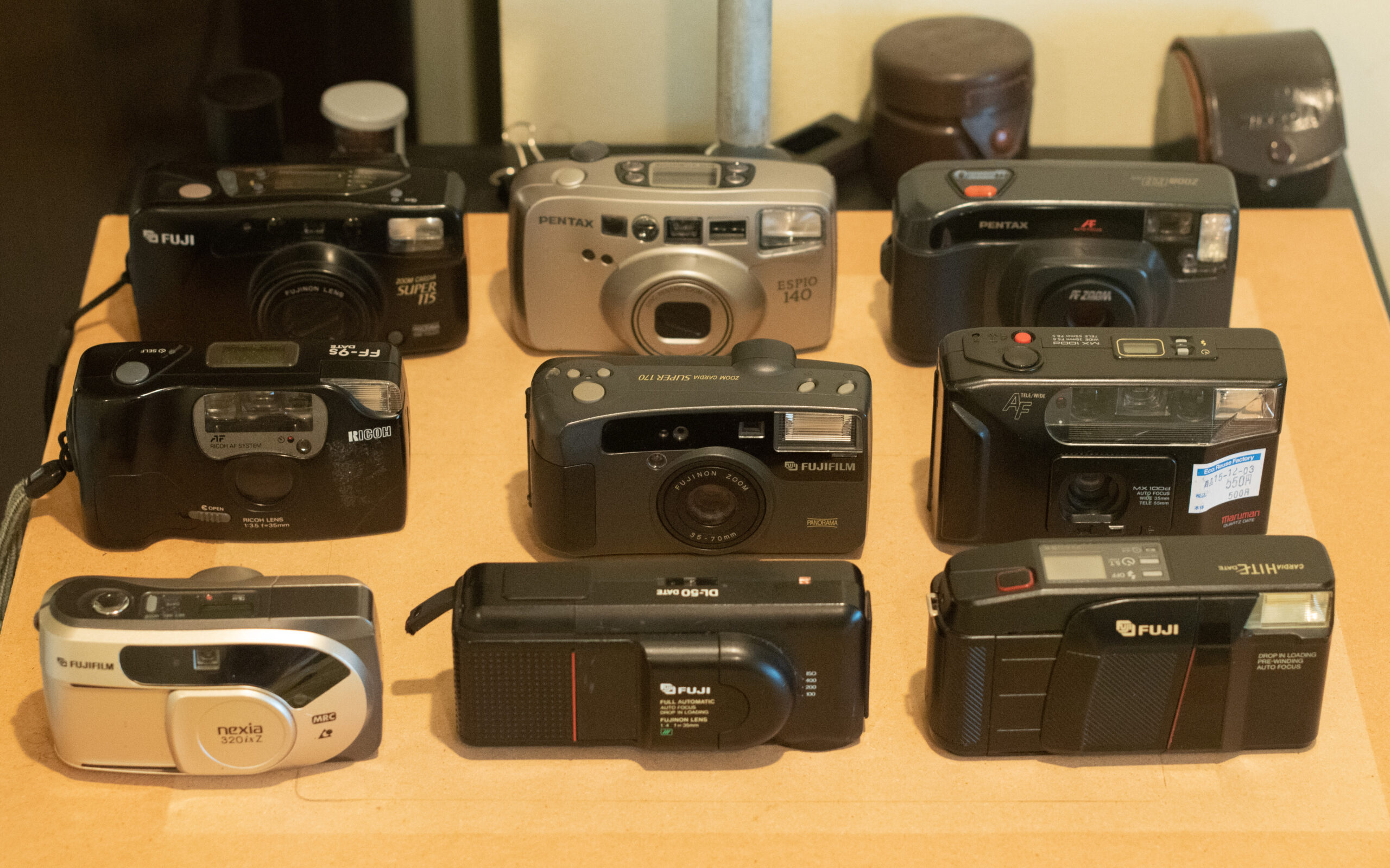
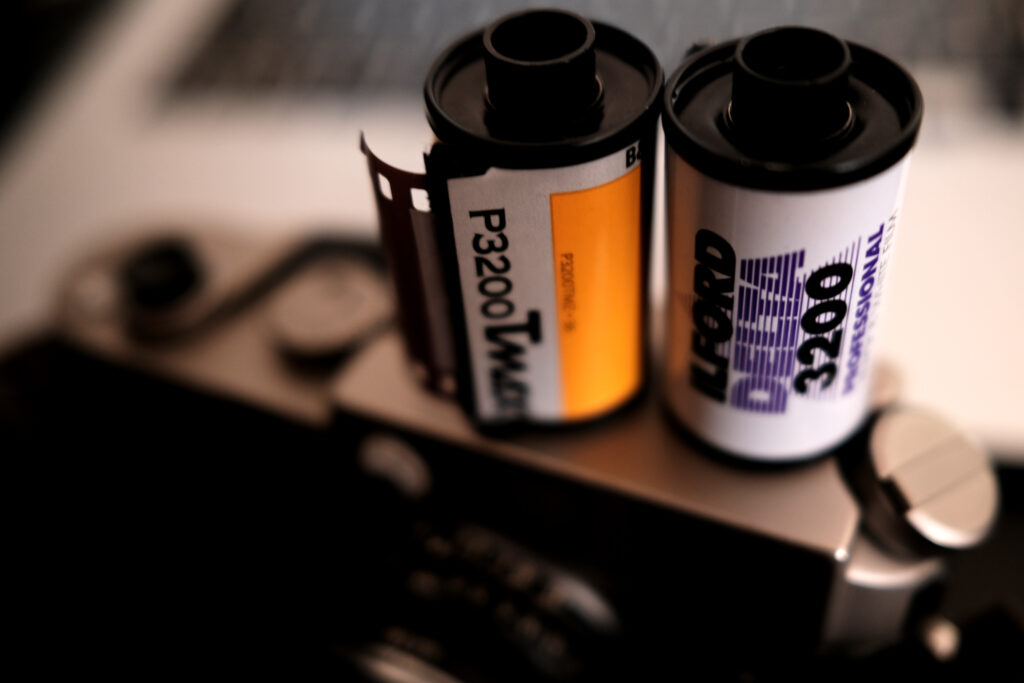
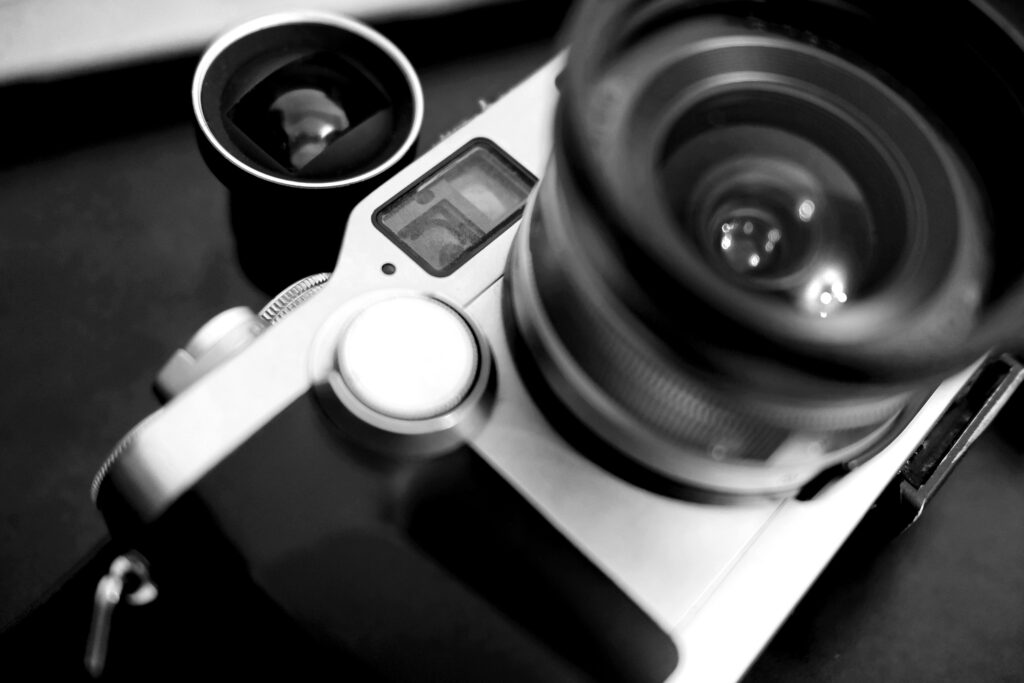
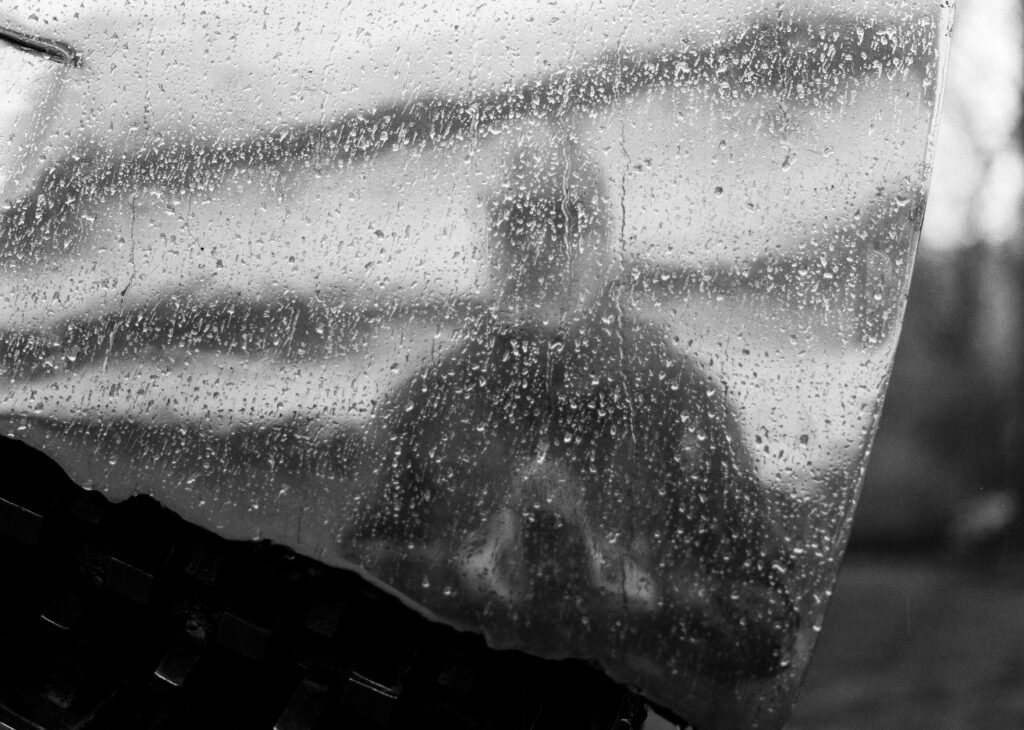
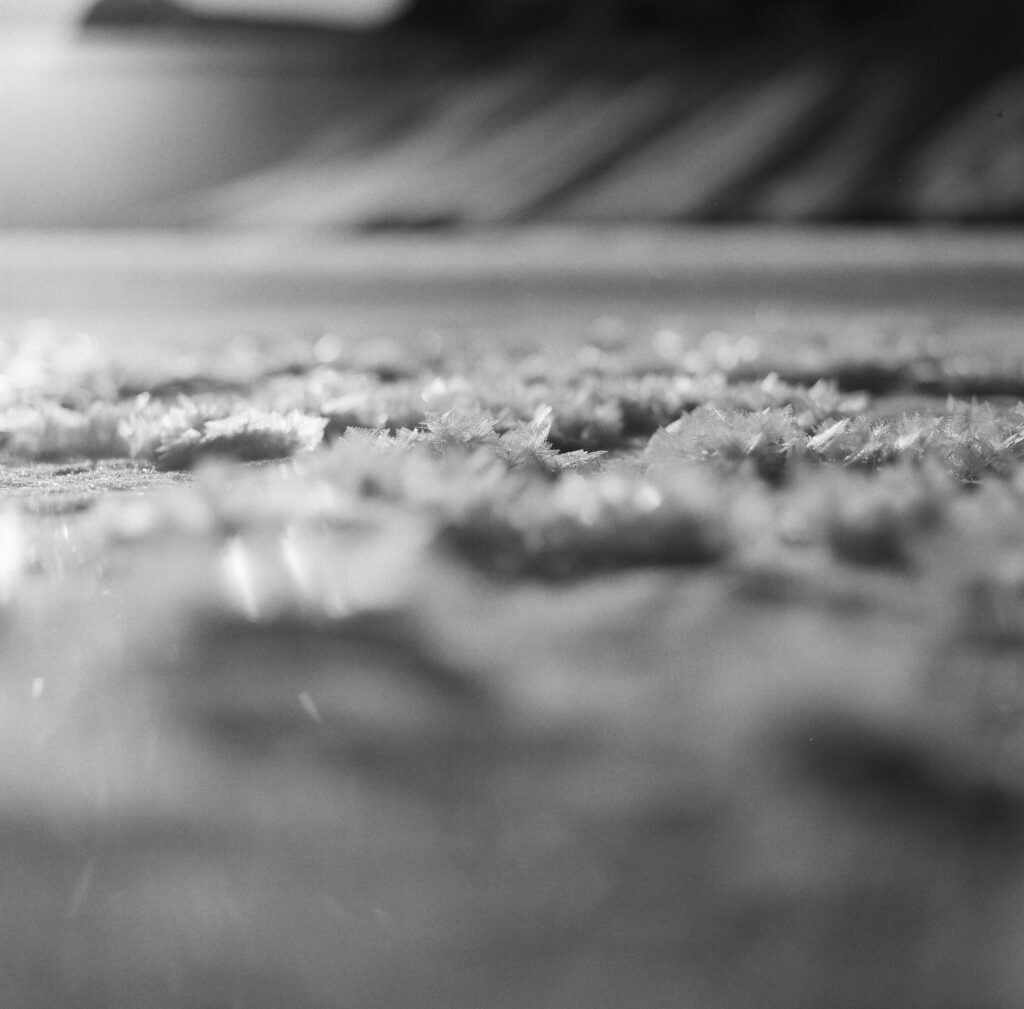




Comments
Art Meripol on Some of my thoughts and experiences with Point & Shoots
Comment posted: 22/05/2024
Tom Perry on Some of my thoughts and experiences with Point & Shoots
Comment posted: 22/05/2024
I would also say look at the small differences between models in a range - zoom compacts are ten a penny, but they aren't all made in Japan, they don't always state their apertures or coatings. If you see all of those in a compact, and all the basics are in place, go for it.
Geoff Chaplin on Some of my thoughts and experiences with Point & Shoots
Comment posted: 23/05/2024
Comment posted: 23/05/2024
shawn granton on Some of my thoughts and experiences with Point & Shoots
Comment posted: 23/05/2024